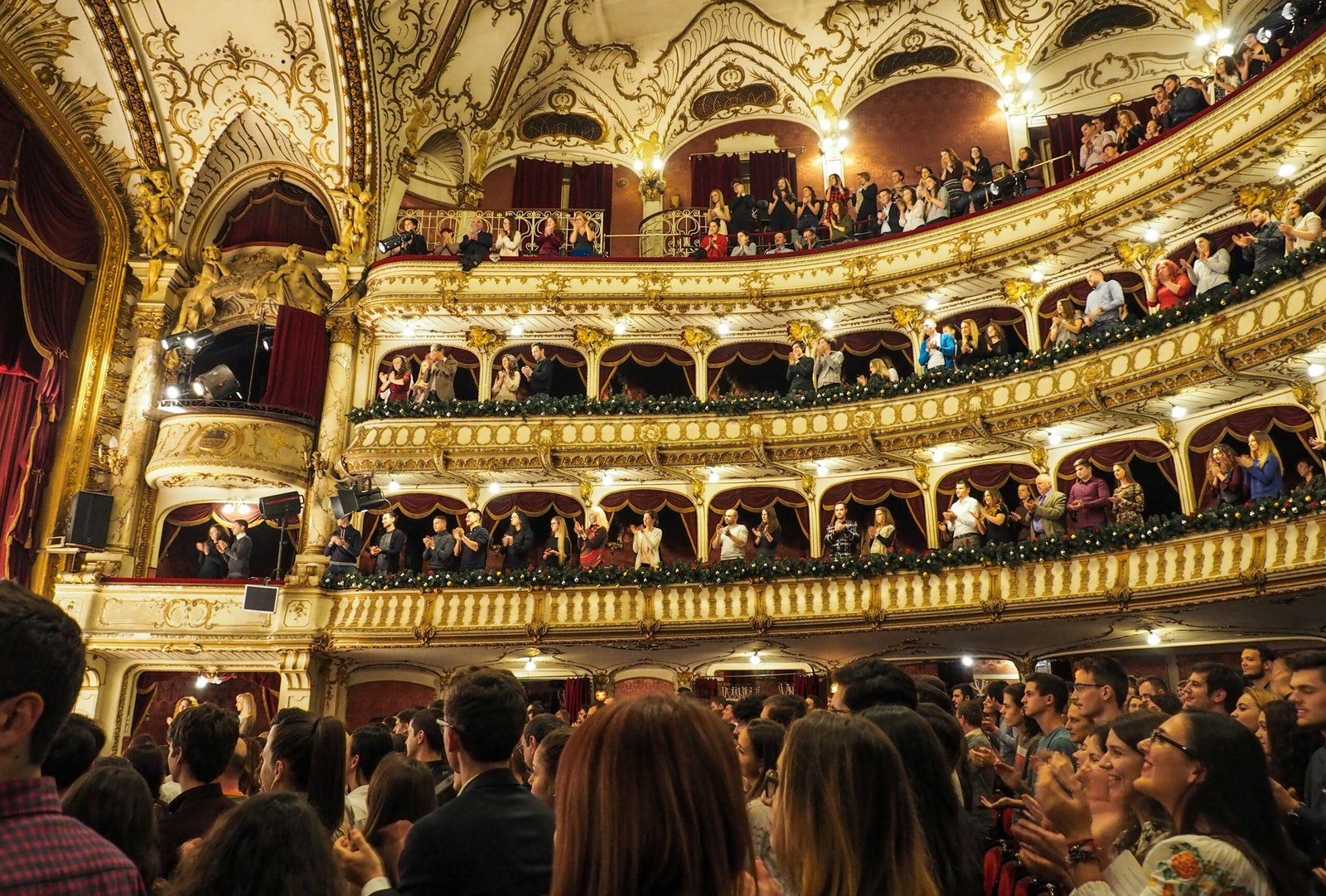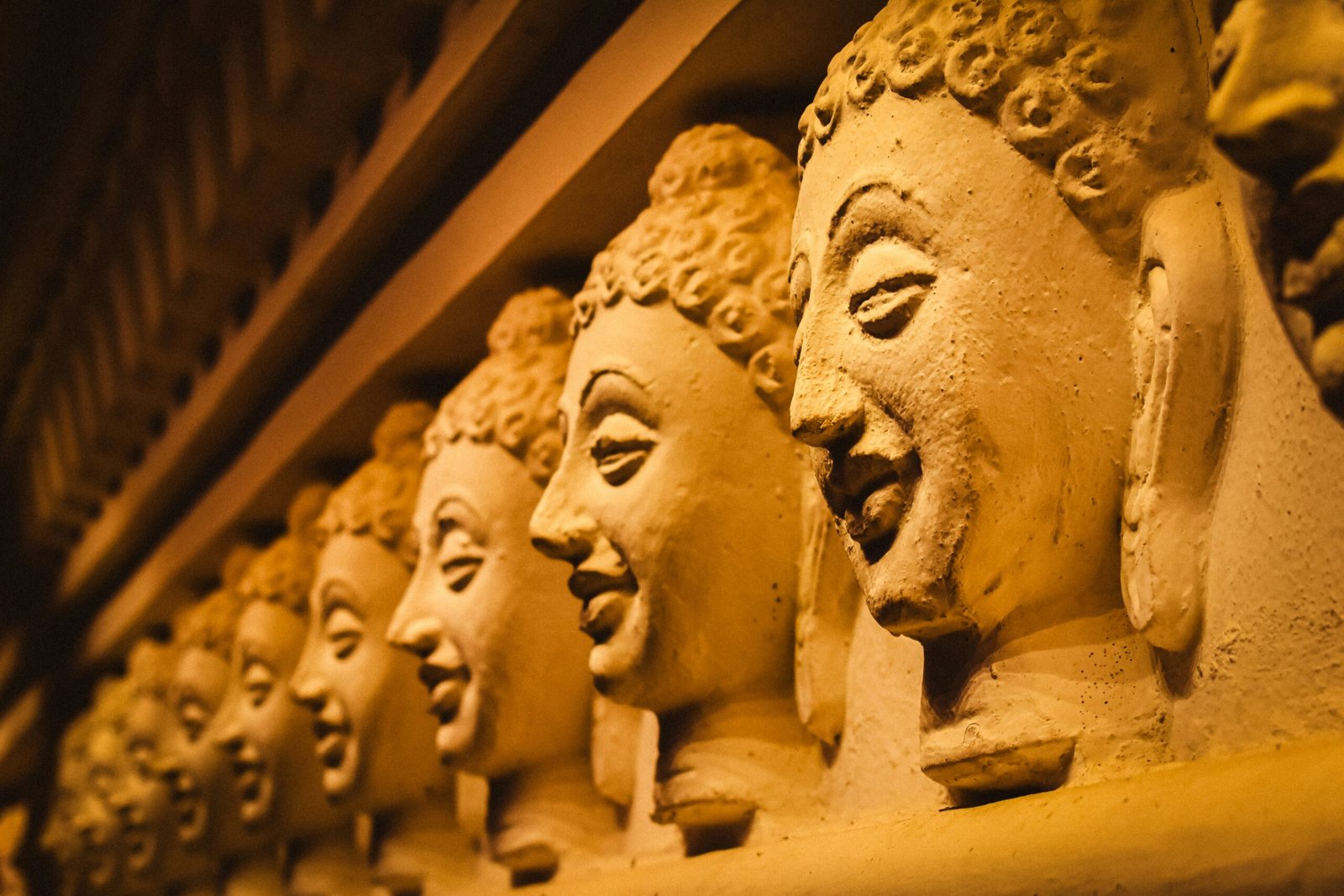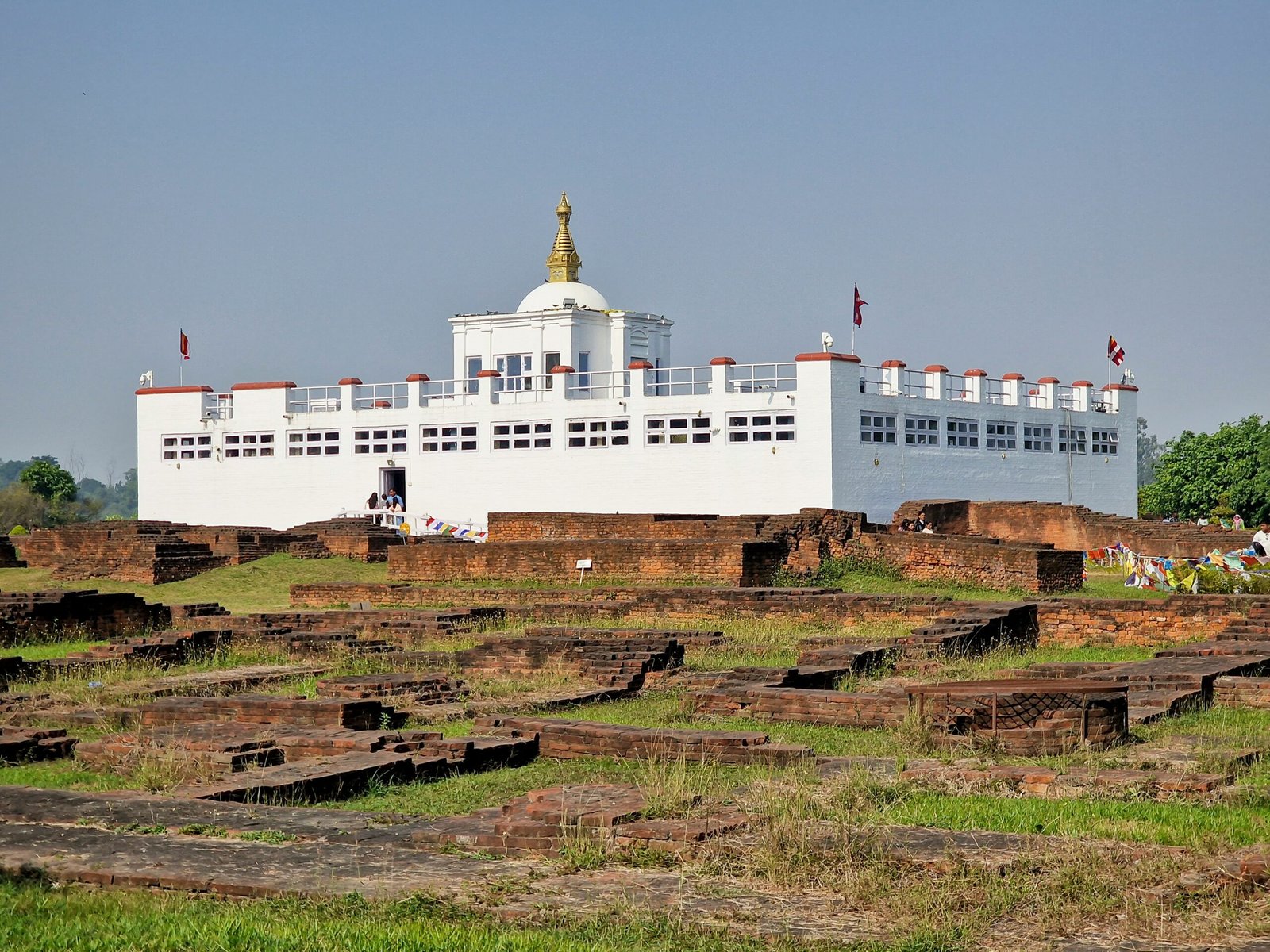Historical Significance of Pashupatinath Temple
Pashupatinath Temple is one of the oldest and most sacred Hindu temples. It has a rich history dating back to the 5th century, with some legends suggesting even older origins. The temple is dedicated to Lord Shiva in his Pashupati form, meaning “Lord of Animals.” This connection ties into many Hindu myths, including stories of Nandi, the sacred bull, and the love between Shiva and Parvati. These legends add cultural depth to the temple’s significance.
Architecturally, Pashupatinath Temple reflects centuries of design evolution. Though the original structure has seen many renovations, especially after the 2015 Gorkha earthquake, it remains stunning. Its pagoda-style architecture is typical of Nepal, with intricate wooden carvings and golden roofs. The temple complex includes shrines, ghats (cremation sites), and vibrant surroundings that amplify its historical and spiritual aura. The architecture represents a blend of art and devotion, highlighting Nepal’s diverse religious traditions.
In 1979, UNESCO recognized Pashupatinath Temple as a World Heritage Site, acknowledging its global importance. The temple is important not just for Nepal but for Hindus around the world. It draws thousands of pilgrims annually, making it a hub for religious tourism. Visitors experience a deep connection to traditional practices and witness the blending of history and spirituality. Pashupatinath Temple remains a vital symbol of Hindu culture, bridging the past and the present.
Architecture and Design of Pashupatinath Temple

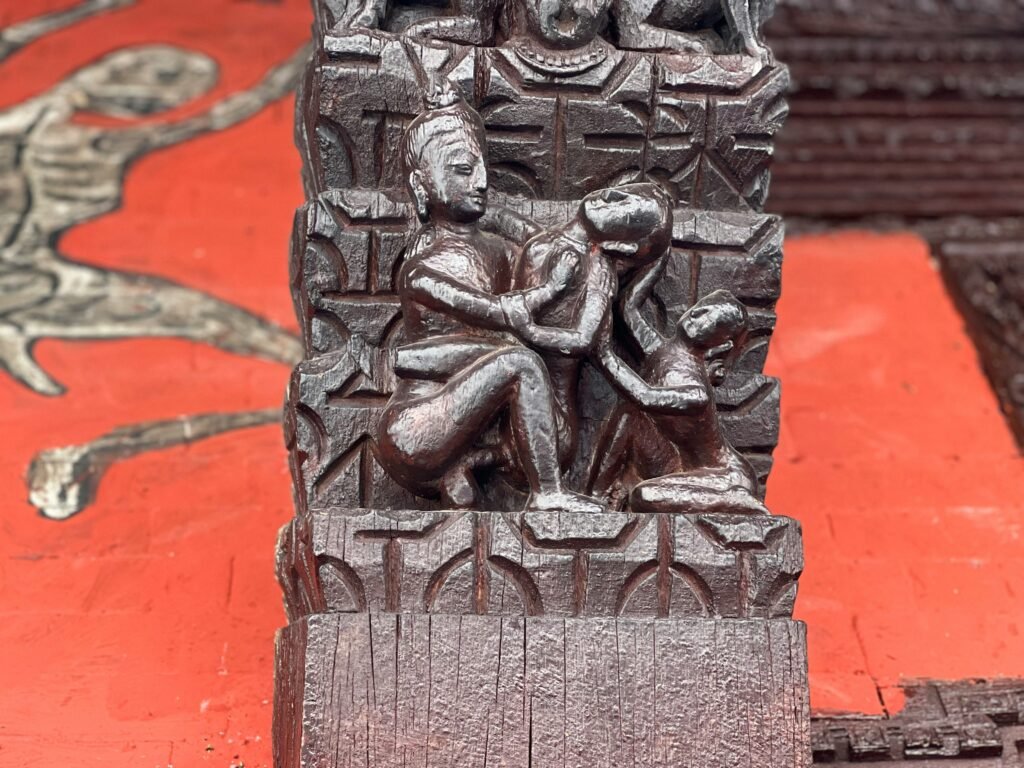

Pashupatinath Temple, a UNESCO World Heritage Site, showcases Nepal’s distinct pagoda-style architecture. Built mainly from wood, brick, and gold, the temple’s intricately carved roofs rest on ornate wooden struts. These detailed carvings depict various deities and mythological figures, reflecting the region’s rich artistic heritage. The traditional Nepali techniques used in construction highlight a deep historical continuity that draws both pilgrims and tourists.
One of the temple’s most striking features is its multi-tiered roof, symbolizing the divine. The sloping, tiered roofs are not just beautiful but also add structural strength. Made from high-quality timber, these roofs demonstrate the dedication and skill of local artisans passed down through generations. The careful design emphasizes the temple’s spiritual importance, following the concept of “sacred geometry” found in spiritual architecture worldwide.
Inside the temple complex, there are numerous shrines dedicated to various deities, with the main focus being the Linga of Lord Shiva. Each shrine’s design is rooted in traditions and legends from Hinduism. The surrounding structures offer insight into the socio-religious context of their time. Compared to other temples, like those in Bhaktapur Durbar Square or Swayambhunath Stupa, Pashupatinath stands out for its unique architectural form and spiritual integration.
In summary, the design of Pashupatinath Temple reflects Nepal’s artistic skill and enhances its status as a vital religious site. The use of traditional materials, intricate craftsmanship, and thoughtful layout creates a space that resonates spiritually. These elements combine to make the temple a remarkable monument within Nepal’s rich architectural heritage.
Rituals and Festivals at Pashupatinath Temple


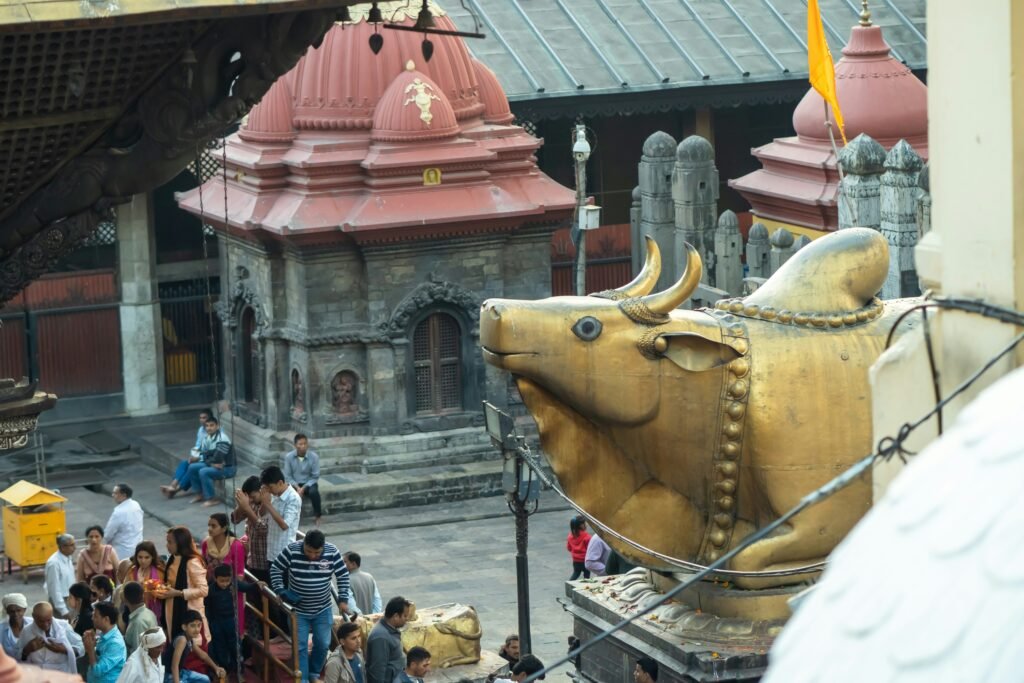
Pashupatinath Temple, a UNESCO World Heritage Site, serves as a spiritual hub and a vibrant center for rituals and festivals. Every year, thousands of devotees and visitors gather here. The rituals performed embody Hinduism’s rich cultural heritage, helping devotees connect with the divine. Daily, priests conduct ‘puja’ (worship), offering flowers, fruits, and incense to the deities. These acts go beyond devotion, symbolizing the surrender of worldly attachments in pursuit of blessings and spiritual growth.
Among the many festivals celebrated at Pashupatinath, Mahashivaratri stands out. This important festival, dedicated to Lord Shiva, involves a night of vigil and sacred rituals. Devotees offer ‘bael’ leaves, fruits, and sacred water to the Shiva Linga, honoring the deity. The temple comes alive with chants, mantras, and bhajans. Pilgrims flood the temple during Mahashivaratri, creating an electric atmosphere filled with devotion, incense, and prayers, making it a unique spiritual experience.
Other festivals, like Teej and Dashain, are also celebrated with great enthusiasm at Pashupatinath. Teej, primarily celebrated by women, involves fasting and singing traditional songs to honor the divine feminine. Dashain, another major festival, brings families together to worship and seek blessings for prosperity. The festive energy during these events strengthens both the spiritual essence of the temple and the sense of community among devotees.
In conclusion, the rituals and festivals at Pashupatinath not only enhance its spiritual significance but also serve as a testament to its role in preserving cultural traditions. The lively celebrations and rituals draw people together, reinforcing the temple’s place as a cornerstone of faith and devotion.
Visiting Pashupatinath Temple: Tips and Insights
Pashupatinath Temple, one of the most revered Hindu temples, draws thousands of visitors each year. To make the most of your visit, plan wisely. The best time to explore is early in the morning, ideally at sunrise. This timing offers stunning views of the temple and a peaceful atmosphere before larger crowds arrive. If possible, visit during the Maha Shivaratri festival. Celebrated with great enthusiasm, this festival attracts pilgrims from all over the world, making it a memorable experience.
Before visiting, it’s important to respect local customs. While photography is allowed in some areas, always ask permission before photographing devotees or rituals. Be mindful of the sacredness of the rituals, as they hold deep personal significance for practitioners.
As you tour the temple complex, you’ll encounter a breathtaking display of temples, shrines, and the sacred Bagmati River. Take your time to appreciate the historical importance and architectural beauty surrounding you. After your visit to Pashupatinath, consider exploring nearby attractions like Boudhanath Stupa and the royal palace at Gokarna.
For transportation, local taxis and public buses are available, making it convenient to travel to and from the temple. In conclusion, visiting Pashupatinath is a spiritually enriching experience, and careful planning ensures you’ll get the most out of your trip. Options are available, including taxi services and local buses that connect the temple to major areas in Kathmandu.
Sensitivity towards the religious practices and beliefs observed at Pashupatinath Temple is paramount to ensure a respectful experience. Engage in observant listening and maintain a quiet demeanor, as this will contribute to the tranquility of the atmosphere. By adhering to these guidelines, visitors can enjoy a meaningful and enriching experience at this sacred site.

